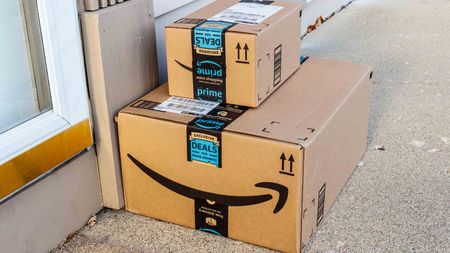You're Hired. At Least for Now.
More employers will rely on temps and contract workers.

While unemployed folks wait for the jobs of tomorrow, they're taking the temp work of today. Employment for contingent workers has increased 23% since July, according to the American Staffing Association. Close to 166,000 temp jobs have been added to the payrolls since last summer, reports the Bureau of Labor Statistics.
That’s typical of the job market as the economy emerges from recession. For managers, contracting with temporary workers seems a more prudent choice than taking on full-time staff -- especially with talk of persistent economic woes still in the air.
What’s different about this recovery is that companies, many of which cut staffs to the quick, seem committed to staying flexible in the long term by using contingent workers to manage everything from special projects to whole departments. Moreover, instead of the typists and factory workers who have traditionally populated the ranks of temps, these days you’re likely to be working alongside an engineer, accountant, doctor, lawyer or technology guru.

Sign up for Kiplinger’s Free E-Newsletters
Profit and prosper with the best of expert advice on investing, taxes, retirement, personal finance and more - straight to your e-mail.
Profit and prosper with the best of expert advice - straight to your e-mail.
Companies now spend $425 billion annually on contingent labor, which accounts for about 11% of the workforce, or 14 million people. “We’re seeing much stronger demand for professional skills,” says Joanie Ruge, senior vice-president of Adecco Group North America, a giant temp-staffing agency. “We have 1,500 openings across the U.S. for contract accounting and finance positions.”
Littler Mendelson, a worldwide law firm specializing in labor law, is firmly convinced of the coming contingent-worker revolution. Littler predicts that half of the new workers added in 2010 will be contingent -- enough that soon 25% to 35% of employees in the U.S. will be on finite stints, working project to project or under contract. The possibility that health insurance will become more affordable to those outside traditional employment arrangements could be a big impetus.
It’s getting easier to maintain an upward career trajectory as a contingent worker. Professional connections are easy to make and maintain via electronic networks, such as Facebook, LinkedIn and Twitter, and via plain old e-mail. Varied assignments that expose you to different companies stretch your skills. And in addition to the services of traditional staffing agencies, such as Adecco or Manpower Inc., a host of other businesses, such as MBO Partners and BOTH, have sprung up to help people committed to the free-agent lifestyle. These firms provide back-office work such as billing, bookkeeping and tax services; they may also offer group insurance and retirement plans and facilitate collaboration with peers.
For now, though, most people who take on temp work still hope for a permanent offer -- and 20% to 30% of them will likely get one. But a recent survey by the American Staffing Association showed that 25% of temps preferred the autonomy and flexibility of a contingent career, where success depends on your skills and the demand for them instead of on the fortunes of a single company or even an entire industry. Says ASA president Richard Wahlquist: “It’s a different kind of job security.”
Get Kiplinger Today newsletter — free
Profit and prosper with the best of Kiplinger's advice on investing, taxes, retirement, personal finance and much more. Delivered daily. Enter your email in the box and click Sign Me Up.

Anne Kates Smith brings Wall Street to Main Street, with decades of experience covering investments and personal finance for real people trying to navigate fast-changing markets, preserve financial security or plan for the future. She oversees the magazine's investing coverage, authors Kiplinger’s biannual stock-market outlooks and writes the "Your Mind and Your Money" column, a take on behavioral finance and how investors can get out of their own way. Smith began her journalism career as a writer and columnist for USA Today. Prior to joining Kiplinger, she was a senior editor at U.S. News & World Report and a contributing columnist for TheStreet. Smith is a graduate of St. John's College in Annapolis, Md., the third-oldest college in America.
-
 Why Does the Fed Prefer PCE Over CPI?
Why Does the Fed Prefer PCE Over CPI?Inflation has been top of mind for lots of folks in recent years. Most of Wall Street follows the CPI but the Fed favors the PCE. Here's why.
By Charles Lewis Sizemore, CFA Published
-
 Five Great Places to Live in Wyoming
Five Great Places to Live in WyomingWhether you prefer the buzzy affluence of Jackson Hole, rodeo towns or mountain towns, Wyoming should be on any nature lover’s list.
By Drew Limsky Published
-
 Roth IRA Contribution Limits for 2025
Roth IRA Contribution Limits for 2025Roth IRAs Roth IRA contribution limits have gone up. Here's what you need to know.
By Jackie Stewart Last updated
-
 How to Find Foreclosed Homes: Best Foreclosure Listings Sites
How to Find Foreclosed Homes: Best Foreclosure Listings SitesMaking Your Money Last Find foreclosed homes for sale on these foreclosure listing websites. Search for properties on these free, paid or government sites.
By Bob Niedt Last updated
-
 Four Tips for Renting Out Your Home on Airbnb
Four Tips for Renting Out Your Home on Airbnbreal estate Here's what you should know before listing your home on Airbnb.
By Miriam Cross Published
-
 Five Ways to a Cheap Last-Minute Vacation
Five Ways to a Cheap Last-Minute VacationTravel It is possible to pull off a cheap last-minute vacation. Here are some tips to make it happen.
By Vaishali Varu Last updated
-
 How to Figure Out How Much Life Insurance You Need
How to Figure Out How Much Life Insurance You Needinsurance Instead of relying on rules of thumb, you’re better off taking a systematic approach to figuring your life insurance needs.
By Kimberly Lankford Last updated
-
 Amazon Big Deal Days Is Coming! We’ve Got All the Details
Amazon Big Deal Days Is Coming! We’ve Got All the DetailsAmazon Prime To kick off the holiday season with a bang, Amazon Big Deal Days runs Tuesday, October 8 and Wednesday, October 9.
By Bob Niedt Last updated
-
 How to Shop for Life Insurance in 3 Easy Steps
How to Shop for Life Insurance in 3 Easy Stepsinsurance Shopping for life insurance? You may be able to estimate how much you need online, but that's just the start of your search.
By Kaitlin Pitsker Last updated
-
 Five Ways to Shop for a Low Mortgage Rate
Five Ways to Shop for a Low Mortgage RateBecoming a Homeowner Mortgage rates are high this year, but you can still find an affordable loan with these tips.
By Daniel Bortz Last updated